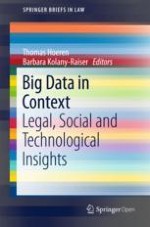
Open Access 2018 | OriginalPaper | Buchkapitel
Big Data and Smart Grid
verfasst von : Max v. Schönfeld, Nils Wehkamp
Erschienen in: Big Data in Context
Aktivieren Sie unsere intelligente Suche, um passende Fachinhalte oder Patente zu finden.
Wählen Sie Textabschnitte aus um mit Künstlicher Intelligenz passenden Patente zu finden. powered by
Markieren Sie Textabschnitte, um KI-gestützt weitere passende Inhalte zu finden. powered by